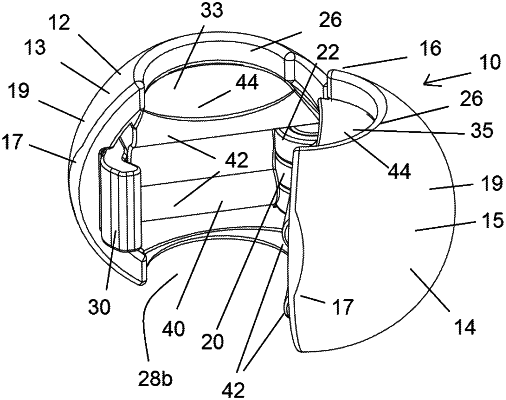| CPC A45D 8/008 (2021.01) | 15 Claims |

|
1. A bead comprising:
first member and second member pivotally secured adjacent first sides thereof such that the first and second members are pivotable between a closed position, in which a second side of the first member is located adjacent a second side of the second member, and an open position in which the second sides of the first and second members have moved away from each other;
a first and second openings defined between the first and second side members when in the closed position;
a first resilient pad provided on a first surface of the first member; and
a second resilient pad provided on an adjacent first surface of the second member;
wherein the first and second resilient pads include complementary ridges on adjacent inner surfaces extending continuously along a length from adjacent the first side of the first and second members to adjacent the second side of the first and second members such that when the first and second members are in the closed position, the ridges engage to deflect the hair passing through the bead from the first opening to the second opening, the ridges, being arcuate in transverse cross section, form continuous corrugations extending transversely to an axis passing centrally through the first and second openings;
wherein the ridges extend perpendicular to a direction of the hair passing through the bead from the first opening to the second opening, such that the hair changes direction as it passes over the ridges;
wherein the first member comprises a hemispherical first shell and the second member comprises a hemispherical second shell such that the first surfaces of the first and second shells are concave in shape and opposed second surfaces are convex in shape;
wherein each of the first and second resilient pads includes an outer surface which is convex in shape to be received into the concave first surface of the first or second shell; and
wherein end surfaces of the first and second resilient pads are each concave prior to engagement together such that as the first and second resilient pads are pressed together, the upper and lower end surfaces bulge outwardly, due to the resilient nature of the material, to become generally planar.
|